
3 Perfect Rides for Families
Along the Burke-Gilman Trail
The Ultimate Pacific Northwest Clamming Guide
Discover Amazing Adventures on Washington’s Rivers
PARENTMAP.COM/ADVENTURE PNW INSIDE + OUT
Family Adventure
2024
SUMMER























































2 / PARENTMAP.COM ADVENTURE W U O free








Summertime traditions, It's what we do best










Seize the JOY!!
Glee comes naturally at KidsQuest...
Come play with us in downtown Bellevue!
• Use your brain and your brawn to move the boxes in our On the Go exhibit.
• Hoot and howl at funny books in the Story Tree.
• Splish and splash like a duck in our Water exhibit.
• Do your happy dance when you get to the top of our 2.5-story Atrium Climber.
• Be a mad scientist and formulate colorchanging slime in our special programs!

Free & discounted tickets available
KidsQuest Children’s Museum is a 501(C)(3) non-profit organization.

4 / PARENTMAP.COM
Family Adventure Summer 2024
Doable Family Bike Rides
Along the Burke-Gilman Trail 7
Fantastically fun spots to play and eat on the 20-mile long trail
Clamming 101 for Families 13
Get the rundown on how and where to dig for your dinner in the Pacific Northwest
Amazing Adventures on Washington’s Rivers 21
Spend your summer floating, fishing and white water rafting with the kids

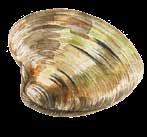




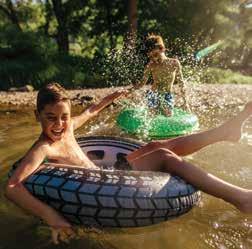
PARENTMAP.COM FAMILY ADVENTURE / 5 FAMILY ADVENTURE SUMMER 2024 PUBLISHER Alayne Sulkin EDITORIAL MANAGING EDITOR Allison Sutcliffe TRENDS AND ENGAGEMENT EDITOR Madison Miller ASSOCIATE EDITOR Kari Hanson CALENDAR EDITOR Julie Dodobara COPY EDITOR Sunny Parsons CONTRIBUTORS Nancy Schatz Alton, Lauren Braden, Leighton Thomas MARKETING DIRECTOR Lindsey Carter EMAIL MARKETING SPECIALIST Devon Hammer SOCIAL MEDIA SPECIALIST Brooke Collins ADVERTISING SALES + PARTNERSHIPS DIRECTOR OF COMMUNITY PARTNERSHIPS + ADVERTISING SALES Jessica Collet SENIOR ADVERTISING AND PARTNERSHIPS MANAGER Ida Wicklund EVENTS + COMMUNITY PARTNERSHIPS SPECIALIST Brenna McCown CLIENT SERVICES + DESIGN COORDINATOR Angela Goodwin ADVERTISING CLIENT SERVICES SPECIALIST Mallory Dehbod DIGITAL ADVERTISING + MARKETING SPECIALIST Taryn Weiner PRODUCTION COORDINATOR Tamryn Nell ART + PRODUCTION SENIOR DESIGNER Amy Chinn ADMINISTRATION BUSINESS MANAGER Carolyn Brendel OPERATIONS ASSISTANT Erika Widjaja 13 7 21 Digging clams is easier than I thought possible, and on most outings, we have our limits within 30–45 minutes.
CONTENTS

The sweetest memories are made far away from any screen. With 40 years of experience, Wilderness Awareness School offers innovative avenues to connection. Games, skills, storytelling, and activities facilitated by highly trained mentors offer a new way to experience the natural world.



wildernessawareness.org SEATTLE AND EASTSIDE LOCATIONS • AGES 6–18 •
SUMMER CAMPS DAY, OVERNIGHT-and-EXPEDITIONS
Trails + Treats
Three fun spots along Seattle’s Burke-Gilman Trail to ride, play and eat
By Lauren Braden

The greatest charms of Seattle’s quirky neighborhoods are easily missed when you drive through them. But there’s another way to explore the city’s colorful street art, funky industrial ruins and tastiest bakeries, and it’ll get your family exercising under the sun.
Grab a scooter, roller skates, bicycle or stroller and roll your way along one of these scenic stretches of North Seattle’s paved pride and joy — the Burke-Gilman Trail.
From rail to trail
Like many of our region’s best bike paths, the Burke-Gilman is a former railroad bed. Its origins date back to the 1885 founding of the Seattle, Lake Shore and Eastern Railway Company by a small group of visionaries, including the trail’s namesakes, Thomas Burke and Daniel Gilman. Eventually acquired by the Northern Pacific Railroad, this railway carried coal as well as passengers for more than 50 years, but the line was later abandoned, and a new vision emerged for the corridor: a bike and walking path.

it connects with the Sammamish River Trail. To experience the trail with kids in tow, keep your outing manageable by choosing a bite-size chunk to explore. We’ve given you three kid-friendly routes here. Each destination starts your ride at a public city park with free parking. Distances given are one way, so double them for a round-trip ride.
By 1978, Seattle had finished the first segment of the BurkeGilman Trail, from Gas Works Park to Kenmore. Today, the trail comprises 19.8 miles of flat, scenic, paved path — a multiuse recreational wonder used by everyone from bike commuters to jam skaters.
Yet, the trail is unfinished. A 1.5-mile “missing link” along the industrial Salmon Bay waterfront forces cyclists onto roads and over old railroad tracks. Some good news: In 2023, the City Council committed to repairing this missing link and completing the trail. For now, avoid this stretch when riding with kids (from the Ballard Locks east to 11th Avenue).
Where to ride
The Burke-Gilman Trail snakes along the waterfront from Golden Gardens Park on Puget Sound to Matthews Beach on Lake Washington, pulling away from shoreline only to cross
1/ Destination: Ballard
The route: Golden Gardens Park to the Ballard Locks (1.7 miles)
This newest stretch of the Burke-Gilman Trail (it begins at the southern border of the park) is also the least crowded, but not necessarily the quietest; bring your young trainspotters here for periodic glimpses of the busy BNSF tracks nearby. Note: The trail crosses over a spur of lightly used train track 1 mile in, so keep your kids beside you and cross safely together. A little farther ahead, you’ll cross Seaview Avenue N.W. at a stoplight before the final approach to the locks.
Play: The Golden Gardens Park playground has swings, climbable nets and a pirate ship, perfect for young kids to expend some energy if they’ll be in the stroller or bike trailer later. At low tide, a stroll on the sand makes for good beachcombing.
FAMILY ADVENTURE / 7


AcrossfromSeattleCenter
4405thAve.N.Seattle,WA98109
Wednesday-Saturday,10a.m.to5p.m.
Alwaysfree|Tours@2p.m.
discovergates.org @discovergates

Ride S.M.A.R.T.
The Cascade Bicycle Club advises cyclists big and small to remember to ride SMART on the Burke-Gilman Trail:
S – Stay alert: Watch out for other cyclists, pedestrians and cars at crossings.
M – Maintain space: Leave enough room around you and move off the trail when you stop.
A – Act safely and predictably: Wear a helmet, stay right and pass left.
R – Respect the rules of the road: Yield to pedestrians, use hand signals, and cycle single file (which is safer).
T – Think ahead and talk: Call out your actions (e.g., “stopping,” “passing on your left”) and hazards you spot (e.g., “broken glass”), all using your outside voice.
For more beginner and safety tips, visit cascade.org.
8 / PARENTMAP.COM
TREATS Arrivecurious. Leaveinspired.
TRAILS +
fishing vessels and even the occasional kayak from saltwater Puget Sound to freshwater Lake Union. Some kids can spend hours watching the boat traffic, while others head straight for the salmon ladder to spot jumping fish. A free museum tells the story of how the locks were completed in 1917 by the Army Corps of Engineers. Adjacent to the locks is the perfect picnic spot, the Carl S. English Jr. Botanical Garden.
2/ Destination: Fremont
The route: Gas Works Park to Fremont Canal Park (1.5 miles)
Join the Burke-Gilman across the street on the north side of Gas Works Park and head west. This ride (or walk; this is a good, short segment to try on foot) starts through the concrete jungle of lower Wallingford. Expect a few wellmarked street crossings. You’ll pass marinas on Lake Union laden with sailboats and houseboats. Then meander under the massive Aurora Bridge toward the high-tech campuses that line the lovely Fremont Cut waterway, which is usually

dotted with ducks, kayaks and stand-up paddleboards on sunny summer days.
Play: Some call it an industrial eyesore, but Gas Works Park, the eerie remains of a coal-gasification plant with one of the


























































































































DISPLAY GARDENS & GARDEN TOURS




PAINT & SIP IN THE ROSE GARDEN

LIVE MUSIC & VENDOR VILLAGE

BEER & WINE TASTING GARDEN




































FAMILY ADVENTURE / 9 ptdefiancegardenfest.org
PRESENTS
MAKE & TAKE WORKSHOPS LECTURES, CLASSES & DEMONSTRATIONS
Gas Works Park







Problem solving and creating a sense of self is a pivotal process for children. We strive to meet kids where they are and provide them with a safe and supportive space so they can challenge themselves at their own pace. By growing connections within themselves, their ecosystem, and with their peers they become more adaptive and resilient when encountering unfamiliar situations.

oxbow.org/education/summercamp
TRAILS + TREATS
continued from page 9
best views and kite hills in the city, is deeply beloved and indisputably unique. Kids who love to climb will adore the playground. There’s also a cool sundial to examine at the top of the grassy hill; and on a day with a gentle breeze, getting a kite into the air on this hill is just that — a breeze.
Eat: The funky Fremont neighborhood has lots of stops for those with a sweet tooth, especially Brownies and Bites for a Mexican hot chocolate fudge bar, or Theo’s Chocolates, which hosts a kids’ story time on weekends.

Cool stops: When you cross under the Aurora Bridge, look north. Two blocks up the hill sits the Fremont Troll, beckoning young climbers to crawl all over it. Another curiosity just off the trail — but hard to miss — are Fremont’s topiary apatosaurus dinosaurs, which are made of real ivy and get watered regularly. Snap a few selfies, then head half a block up Phinney Avenue N.W. to find the colorful Fremont mural as well as a vintage yellow Volkswagen Beetle, currently growing its own fragrant flower garden under the hood.
3/ Destination: Laurelhurst
The route: Pathways Park to Matthews Beach (3.3 miles)
For a bigger taste of the Burke-Gilman Trail, try this longer ride through a quiet neighborhood lined with green trees and alive with birdsong. This route is perfect for parents with young kids in a bike trailer. They’ll enjoy the peaceful ride and have playgrounds to explore on both ends of the excursion.
Play: Seattle’s brand-new play area at Pathways Park (5201 Sand Point Way N.E.) was thoughtfully designed for inclusion and accessibility to serve children of all abilities, from the unique play structures like a play cave and spinning area to immersive experiences in nature. There’s
10 / PARENTMAP.COM

a sensory garden, art installations, water features and lots of soft turf.
Eat: You’ll have to cross Sand Point Way from the trail to grab an outdoor, waterfront table at Magnuson Cafe & Brewery
(7801 62nd Ave. N.E.). There’s plenty of bicycle parking, and ordering at the counter makes lunch easy. The menu is standard pub fare but tasty. Try a hand-dipped mint chocolate chip milkshake for dessert.
Cool stop: Bring bathing suits — Matthews Beach Park has Seattle’s largest freshwater swimming beach, complete with sand and lots of grass for laying out blankets. Aa lifeguard is on duty on warm summer days. ■
Lauren Braden is a Pacific Northwest writer who focuses on nature, recreation and local travel. She’s the author of the new book “52 Ways to Nature, Washington: Your Seasonal Guide to a Wilder Year,” published by Mountaineers Books. Find more of her writing at nwtripfinder.com.
Editor’s note: Pathways Park was under construction at the time this article was written, but is scheduled to be open by the time the article is published.



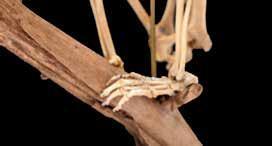 Photo courtesy of Magnuson Cafe & Brewery
Photo courtesy of Magnuson Cafe & Brewery

Dig for Your Dinner
The ultimate Northwest family clamming guide
By Nancy Schatz Alton
Digging for clams on cold, wet spring days didn’t sound alluring to me. But after hearing how much my husband and daughters enjoyed their forays, I finally joined them a few years ago.
There is something positively magical about this iconic Pacific Northwest hobby.
Even if the rain is spitting down from the sky and blanketing my face, I forget about getting wet within minutes of stepping onto the beach. My husband and oldest daughter find a good digging spot while my younger daughter and I explore the habitat.
Digging clams is easier than I thought possible, and on most outings, we have our limits within 30–45 minutes. This means that even on the wettest day, the rain doesn’t matter for at least an hour or two; my whole family takes time to examine and watch the wild world. And dinner that night is centered on our harvest of delicious clams.
Read on to learn the basics of this endeavor and the best beaches for clamming.
We’ve also included a section on razor clamming on the Washington coast. It requires a longer trek to partake in this
type of clamming, but a razor clam dig is truly fun, taking on the atmosphere of an outdoor festival, with clammers harvesting up and down the beach.
Clamming basics: What to pack
Put together a clamming day kit that you keep in your car, suggests Camille Speck, a Washington Department of Fish and Wildlife (WDFW) shellfish biologist who works out of the department’s Port Townsend office.
License: The most important item is a shellfish/seaweed license that is good from April 1 to March 31 of the following year. Or you can buy a short-term one-, two- or three-day license. The easiest way to purchase one is online; you can print out a temporary pass, and your real pass will be mailed to you. Children under the age of 14 do not need a license. (Catch record cards are still required for certain species; see the regulations
12 / PARENTMAP.COM

online for additional information.)
Tools: For digging steamer clams, bring simple small garden tools, including a rake and a trowel. Most clams are not far under the surface. For example, steamer clams are 2–4 inches down.
If you are after butter or horse clams, which are found at deeper levels, you will need a shovel. Rubber-dipped

gardening gloves won’t keep your hands dry, but they will keep them cleaner and protect hands from glass and other small impediments. Throw in a roll of toilet paper for beaches without facilities. You’ll need a 5-gallon bucket with a tight-fitting lid to bring home your clams. Each person’s limit must be kept separate from the others, so you’ll need a bag for each harvester; the bag is also helpful for rinsing clams of sand and grit. Speck recommends using mesh bags such as the ones that bunches of lemons and pounds of potatoes are stored in at supermarkets.
Pick up plastic clam, shrimp and crab gauges, which are cheap and sold at most sporting goods stores. You’ll need a scale that hooks onto a bucket (also sold at most sporting goods stores) for larger clams (like butter and cockle clams), since you will exceed the 10-pound weight limit before you dig up 40 clams.
Tide charts: Most importantly, know the time of the low tide for your clamming beach. Look online for tide charts or pick up a Puget Sound tide guide or calendar at any sporting good or marine supply store. You have about a fourhour window around this tide. The best steamer clamming tides are between a tide height of 0.0 and -1.5. There is no need to wait for the lowest tides of the year to gather steamer clams.
Boots and clothes: Lastly, but perhaps most importantly, pack rubber boots. I always pack complete changes of clothes for myself and my daughters, and we make use of the extra clothing perhaps 50 percent of the time.
Clam digging 101
The learning curve for clamming is blessedly short. Here are some top tips and important basics.
There are several types of clams available on Washington public beaches, including littleneck (also called steamers), horse and butter clams, geoducks (the world’s biggest burrowing clam), and razor clams (see below).
The daily personal limit for all marine clams is up to 40 clams, but not to exceed 10 pounds in the shell. In addition, horse clams have a separate daily limit of seven, and you are allowed three geoducks daily (the first three dug).
Clam digging tips

Follow the clammers. First, look for people on the beach who are successfully harvesting clams. This is the stretch of beach where you should start digging. Each type of clam lives along a certain band of the beach and at a certain depth. The Washington Shellfish Trail has a helpful guide to species.
Look for the show. Before you start digging, look for a hole or dimple in the sand or mud. This is called the “clam show” and it means the clam has withdrawn its neck after feeding and started to dig back down in the sand. Sometimes water or sand squirts out of a hole when you walk near it. That marks the spot where you begin digging. Steamer clams are just 2–4 inches below the surface, while butter clams are 1 foot deep, and horse clams are roughly 1.5 feet deep. (You’ll need that shovel for these deeper clams.)
Measure. Measure each clam with your gauge; some clams need to be a certain size in order to take them home with you. To make sure the clams you keep are of legal size, test them by using the
FAMILY ADVENTURE / 13




continued from page 13 shellfish gauge. If they do not fall through the hole on the shellfish gauge, they are legal. Place ones that are too small back in the muck. Count your limit; the counting task is a great way to involve your younger children.

Involve the kids. Depending on their age, kids can participate by throwing clams in the bag, measuring or counting — or simply playing on the beach, says Speck. “We want to create responsible future shellfishers, but they should be enjoying themselves, too.”
Fill each hole. After you are done digging and harvesting, fill the hole. Some clam species need the holes filled for survival, and the humans on the beach need the holes filled so they don’t trip and possibly fall.
Pack the clams to take home. On clamming days, you may meet a WDFW staff person counting limits in the beach parking lot. After you have had your limits counted, fill your bucket with salt water for the drive home. “Cover your clams with at least 6 inches of water and keep it cold. Float a cooler pack in it on hot days,” says Speck. “The clams need a minimum of four hours in this water to purge their bodies of grit and sand.” She likes to purge her clams overnight.
Let them spit. Once the clams have purged, Speck likes to wrap them in a wet dishcloth, put them in a colander with a container underneath it to catch water, and place them in the fridge overnight, so the clams can spit out more water. She prefers to cook the first portion of her harvest the next day.
14 / PARENTMAP.COM NORTHWEST FAMILY CLAMMING
A flexible and convenient way for people living with disabilities to invest in their quality of life. Plan website: www.WashingtonStateABLE.com Customer Service Center: 1-844-600-2253 or 1-844-888-2253 (TTY) A flexible and convenient way for people living with disabilities to invest in their quality of life. WashingtonStateABLE.com • 1-844-600-2253 ddetf.wa.gov FAS22_state_WA_dept_commerce_1-4.indd 1 3/21/22 4:48 PM
Kids dig for clams at Penrose Point state park. Photo by Allison Sutcliffe
My family always eats some of our catch on our first day out. And you can cook the clams right there on the beach. Preparing clams is easy, and the internet has a plethora of recipes.
Shelf life. Speck recommends eating Manila clams within three days of harvesting. Butter clams and horse clams each need a rubber band around them for fridge storage (and the same dishcloth arrangement), and they should be cleaned or eaten within 24 hours. Clam meat can be frozen for later use.

Razor clamming 101 Razor clamming is different from other clamming. The season opens in October every year and stays open until sometime in May, depending on the strength of the populations, levels of marine toxins and the tides. Parent Jim Mattison, who has a vacation home near Pacific Beach, says razor clam digs are a blast, full of camaraderie. “It’s quite the spectacle, with everyone on the beach talking to each other.”
The Long Beach Razor Clam Festival, the key razor clamming event of the season, occurs annually in April.
Tides and times for razor clamming. During the fall and winter, the low tides are in the evening, so people start as the light fades from the sky and finish in the dark with lanterns lighting the digging. In the spring, the low tides are in the morning, making for easier daylight digging (although the dig may start before the sun rises, depending on the time of low tide). Check the WDFW site for razor clam dig days for this April and May.
Tools. Tools include a specialized digging tool, either a PVC tube or an aluminum tube that brings up a core of sand. “You repeat this a time or two and you find the razor clam inside the sand,” says Matthew George, WDFW’s coastal shellfish manager.
George says the other vital piece of knowledge for razor clam digging is where to dig, based on the clam show. “They show differently every day. Sometimes the divot in the sand is the size of a quarter and sometimes it is only a slight


















Our mission is to manage and develop a community owned garden that demonstrates today's best historical and environmental practices. The garden houses a unique plant collection that helps educate visitors and creates beauty for public enjoyment.


FAMILY ADVENTURE / 15
South Sound's
24th Avenue S SeaTac, WA 98168
daily from dusk to dawn. Free Admission!
Our HeritageGrowing Our Future
and The South Avenue S WA 98168 Ad ii ! The Seiki Japanese Garden
The
best kept secret! 13725
206.391.4003 Open
Preserving
Our mission is to and a community garden that demonstrates best historical and environmental practices. houses a unique plant collection that
continued from page 15
indent. Look around. Just ask people. They are more than happy to show you.”
Limits. The daily limit for razor clams is the first 15 dug up, regardless of size or condition, and each limit must be in a separate container. You can learn how to shuck the clams and take out the digestive material on the WDFW website, where you will also find plenty of recipes. Or just ask one of the hundreds of people on the beach for instructions.
9 great clamming beaches around Puget Sound
So, now you know how to clam. But where?
Once you’ve identified a beach, check two websites to see if a beach is open. The WDFW opens beaches based on historical and projected recreational use patterns and the abundance of shellfish populations. The Department of Health (DOH) evaluates the population to ensure it’s safe for humans to eat.
Here is a list of family-friendly Puget Sound beaches for clamming, meaning they are relatively easy to walk on and have bathroom facilities. Check the websites for proposed clamming dates for this year and to see if you will need a Discover Pass.
There are many ways to find a great clamming beach. The WDFW website has excellent beach-locating tools. Find a beach by looking at the map.

Indian Island County Park
At this park, Lagoon Beach is a great place for kids to play and for clamming. This beach is close to Port Hadlock and Port Townsend.
Quilcene Bay WDFW Tidelands
This beach on Hood Canal has pit toilets near the northernmost parking lot, but access to clamming is through the south parking lot via a gravel access trail. Although this isn’t the most scenic beach, small clams are plentiful here.
Duckabush
Look for elk and bald eagles while clamming on this beautiful WDFW tideland. There are no restrooms, but Dosewallips State Park, which does have restrooms, is just a few miles north of here.
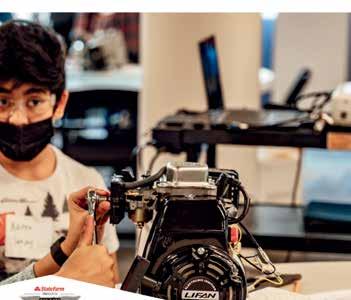


NORTHWEST FAMILY CLAMMING

FAMILY ADVENTURE / 17 Traveling exhibition from: Toured internationally by: SEE AMAZING TOWERS BUILD YOUR OWN! On View May 25 through Sept 22, 2024 Towers of Tomorrow with LEGO® Bricks is a traveling exhibition from Museums of History NSW and toured internationally by Flying Fish. VISIT MOHAI.ORG/TOWERS Media support is provided by:








continued from page 16
North Bay
the history and culture of the Tulalip Tribes







This South Sound beach has an abundant clam population and a planted oyster bed, but clammers should arrive early. There is very limited parking, with no parking allowed on the shoulder.
Birch Bay State Park
This huge beach in Whatcom County has a wide variety of shellfish for harvest, including littleneck, Manila, butter, and horse clams.
West Penn Cove

This Whidbey Island beach has cockle and butter clams, mussels and two planted oyster beds. Visit historic Coupeville while you’re there.
Twanoh State Park
Near Belfair at the tip of Hood Canal, this beautiful beach has camping, a boat ramp and a swimming area.
Dosewallips State Park
Some people consider this beach the holy grail of clamming in the Pacific Northwest, with one of our state’s largest and most productive tidelands. Make it an overnight outing by booking a campground site.
Penrose Point State Park
Not only has this beach been planted with Manila clams and oysters, it’s also home to littleneck, butter, horse and eastern softshell clams. It’s also a great spot to take in views of Mount Rainier. ■
Nancy Schatz Alton is the co-author of two holistic health care guides, The Healthy Back Book and The Healthy Knees Book. She’s the writer/editor at University Prep.
18 / PARENTMAP.COM NORTHWEST FAMILY CLAMMING
.
HibulbCulturalCenter.org CRAFT EVENTS AND MORE!
Photo by Lindsey Carter








www.SkagitChildrensMuseum.net

15,000+ Square Feet Hands-on Exhibits


Art Studio Pre-School Special Events Celebrations Camps & Classes Field Trips Scholarships Museum Store ... and more!
Check website for current operations, hours, special events and more.

501(c)(3) organization whose mission is to promote, encourage and increase an understanding of the arts, science, culture and literature among the children, youth, families and educators in Skagit County and beyond.
Located in Burlington, WA :: Tel: 360.757.8888 www.SkagitChildrensMuseum.net

Closed some holidays VisitBurlingtonWA.com VisitSkagitValley.com


FAMILY ADVENTURE / 19

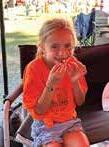












Offering fun, hands on geology programs for kids of all ages.
The lab experience comes to you!
ROCKS • MINERALS • FOSSILS CURATED ROCK BOXES




Starting in the spring with strawberries and raspberries to veggies and sunflowers in the fall harvoldberryfarm.com






Exhibits
Imagination&STEMbasedspaces Curatedtosparkinspiration.

Pop-Ups&Preschool ExploreArt&Sciencethemesin funandengagingways.Thebest waytolearnisthroughPLAY!
Summer
HoursofPlay
Mon - Thu: 1-4 pm Fri - Sun: 9 am - 5pm
ROCKSOLIDSCIENCE.COM

www.kidimu.org Located
20 / PARENTMAP.COM
301RavineLaneNE
BainbridgeIsland,WA Third Generation Family U-pick Farm
FAS24_harvold_berry_farm_1-4.indd 1 3/15/24 4:35





















































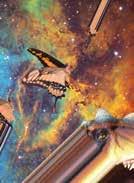

















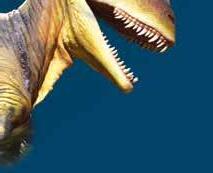



FAMILY ADVENTURE / 21 pacsci.org BE CURIOUS. STEP INTO SCIENCE.
I-5 Exit 77 midway between Seattle and Portland
















































































































22 / PARENTMAP.COM Anyone with a valid 2024 WA MORE THAN 100 PARTICIPATING BUSINESSES OVER 800 PRIZES TOTALING OVER $41,000 100+ STOCKED LAKES STATEWIDE #WATROUTDERBY Visit wdfwderby.com for more information APRIL 27 - OCTOBER 31 Look for the YELLOW tag! WDFWDERBY.COM
Amazing River Adventures
Float, fish and white water raft your way through Washington this summer
By Leighton Thomas
Winding through the picturesque landscapes of Washington state, a network of over 70,000 miles of enchanting rivers play a vital role in the region’s ecology, providing habitat for diverse species, cycling nutrients, and maintaining water quality and supply. They also serve as a haven for recreation. Whether you’re seeking your next big catch, thrilling rapids or peaceful stretches for a leisurely float, Washington’s rivers invite families to immerse themselves in the beauty of the Pacific Northwest from a new perspective.
A river fishing guide for Washington families
Washington’s rivers teem with diverse fish, including trout, shad and salmon. With the right guide, young anglers have ample opportunity to reel in their first catch from many of the rivers around the state, year around.
River fishing can be highly technical; between the gear, the need for a boat (or specific gear) and crowds at peak seasons, working with an experienced outfitter is the way to go. Several outfitters around the state offer fishing experiences for families. Participants learn how to safely navigate river waters via wading, casting or trolling (pulling bait on a line behind the boat, not to be confused with trawling, when a net is pulled) while having a grand adventure. Here are a few options we explored:
• Bradza’s Fly Fishing offers half- and

full-day trips on various Washington rivers; trips start at $450. Owner Jeff is a lifelong fisherman dedicated to providing safe and memorable experiences for families. He will customize a trip to meet the location and the experience your family is seeking. Call (253) 307-3210 to plan your adventure.
• Washington Fishing Guide Services. Scotty and Karen Crawford offer tailored family trips on the Columbia River (summer months) starting at $600 or at family rates on a case-by-case basis. Call (360) 820-0400 to customize your trip.
• Blue Heron Guide Service, operating out
of Forks, offers half-day trips geared toward families with kids ages 5–14, starting at $450. Trips run June–August.
Before you go ...
Families should familiarize themselves with the specific fishing regulations for the area and species being fished, and adhere to those regulations to ensure responsible and sustainable fishing practices. Here are a few things to know:
• Anglers younger than 14 can fish without a license; anyone 15 or older who plans to cast a line must hold a fishing license, easily purchased online,
FAMILY ADVENTURE / 23

WASHINGTON RIVER ADVENTURES
continued from page 23 by calling 360-902-2464, or by visiting a license dealer.
• If you are fishing for salmon, steelhead, sturgeon, halibut or Puget Sound Dungeness crab, all fishers must maintain a catch record card. This card helps the state estimate the recreational catching of specific species. At the end of the season, you mail in your card, even if you catch zero fish.
Don’t miss Washington’s Free Fishing Weekend June 8–9, 2024. The event isn’t specific to any particular river; local organizations around the state host events with fishcentric fun for the whole family.
Washington white water rafting basics
White water rafting offers an exhilarating adventure for the whole family. Rivers are classified based on the difficulty of their rapids, typically ranging from class I (easy) to class VI (extremely difficult and dangerous). For beginners and families with younger children, seek out class I and II rapids, which tend to have small waves and few obstacles. Class III rapids feature moderate waves, irregular currents and occasional obstacles, which require some paddling skills and teamwork to navigate safely. These rapids can be an option for older kids and those looking for a bit more adventure, while still being manageable for beginners. Outfitters that take guests on rivers with class IV+ rapids typically require prior rafting experience and/or only permit guests who are 18 and older.
Where to find rapids:
• Skagit River, classes I–III. Only 90 minutes from Seattle, the Skagit River is best from the end of June to Labor Day. Alpine Adventures runs the upper Skagit (classes II–III), and Triad River Tours offers floats on the middle Skagit (classes I–II). Although they don’t have age restrictions, both outfitters require participants to weigh at least 50 pounds.
• Wenatchee River, classes I–III. The Wenatchee is best for rafting May through July (and sometimes in early August), with the most intense rapids earlier in the year. The river’s water level drops as the summer progresses, offering calmer floats. River Recreation (accepting ages 5 and older) and Osprey Rafting (accepting ages 4 and older or weighing at least 40 pounds) are great options for your
24 / PARENTMAP.COM

littlest rafters. Blue Sky Outfitters will take anyone age 8 or older on Wenatchee’s class III rapids earlier in the season.
• Methow River, classes II–IV. For the biggest thrills, raft the Methow May through July. For calmer floats, you can take family-friendly trips with Alpine Adventures (ages 8 and older) and Methow Rafting (ages 6 and older) in August, when water levels drop.
• Skykomish River, classes I–IV+. The Skykomish is known for its heart-pumping rapids, but Alpine Adventures offers float trips for families with kids as young as 3 years old in May and June. Outdoor Adventure Center allows kids ages 6 and older.
• Hoh River, class II. From March through September, Hoh River Rafters takes rafters as young as 5 years old.
• Tieton River, class IIIs. The Tieton is a great choice for your older thrill seekers. River Recreation (ages 10 and older) and Osprey Rafting (ages 12 and older) run this river in September.
Prices to raft these rivers start at about $70 per person for a half-day adventure (3–4 hours). Outfitters typically provide rafts, paddles, personal flotation devices (PFDs) and a qualified guide. Outfitters have different age and weight minimums, so always check before booking.

























FAMILY ADVENTURE / 25







WASHINGTON RIVER ADVENTURES
continued from page 25
How and where to go tubing with kids in Washington
Grab an inner tube (purchased for as little as $15), two cars and your PFD, and you are ready to enjoy a leisurely float down one of Washington’s rivers. River tubing is suitable for anyone who can swim, and there are numerous places to float within easy driving distance from Seattle. See page 28 for a list of rivers to explore with your inflatable.
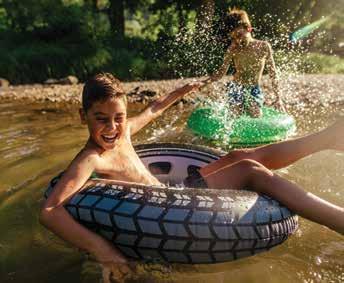




•
•



You’ll need two cars to do a float on your own: one to park at the take-out point, and one to get you to the start of your trip with your gear. Outfitters like Fall City Floating (Snoqualmie River, Fall City) and Leavenworth Outdoor Center (Wenatchee River, Leavenworth) offer rentals and shuttle services.
Tips to make it extra fun:
• Bring an extra inner tube for a cooler
• Use a Frisbee as a paddle
• Stop at all the swimming holes for a dip
Stay safe
As with all outdoor recreation, safety should always be a top priority to ensure an enjoyable experience for everyone involved. Here are some key safety considerations, no matter how you enjoy the water:
26 / PARENTMAP.COM
Visit Us This Summer! Special Guests & Activities June – August 414 Jefferson St. NE • Olympia, WA 98501 (360) 956-0818 • www.hocm.org Themed Adventures • Artists in Residence Animal Encounters
Stage Performers
Rescue Spectacular, Sat. July 13 INSPIRED LEARNING Explore the Museum! 150 Exhibits
As Seen on Blippi!
•
Fire
MakeSpace
Art Studio
Play
•
Nature
Outdoor Discovery Center
Info Tickets&at hocm.org Major Summer Splash! Supporters: Presented By:In Partnership With:
GRAY MATTERS/DR. SACARIN CENTER ADHD STUDY IN COLLABORATION WITH THE FACULTY OF THE YALE SCHOOL OF MEDICINE is now recruiting participants!
Dr. Sacarin's Center is conducting a study on two MEDICATION-FREE interventions for ADHD: qEEG-based sw LORETA Neurofeedback & Photobiomodulation.



Your child may qualify if: - they are 10-14 years of age -they have been diagnosed with ADHD - they are NOT medicated for ADHD

Fun for the Whole Family!
•Dance Classes
•Art Classes
•Language Classes
•School Break Camps
•Sports Leagues
•Outdoor Adventures
•Fitness Classes
•Music Classes
•Arts Events
•Park Stewardship Events
https://sacarin.com/adhd-research/ PARTICIPATION IS FREE!
For more information and to see if your child qualifies, call us at 206-522-8873 or visit


•And so much more! Trips Classes
olympiawa.gov/experienceit






























PUBLIC CRUISES
• Family Treasure Cruise 1 hour interactive pirate adventure for a� ages!

PRIVATE CHARTERS


PIRATE SHIP CRUISES









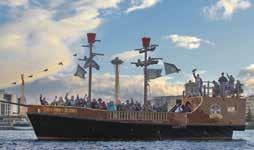
• Adult Pirate Party Cruise (21+) 1.75 hour party cruise with games and great music!

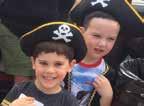


• Family Reunions
• Holidays

• Plan Your Own Voyage Ca� to book Queen Anne’s Revenge for your private event up to 48 guests. Birthday Parties
• We also offer Corporate Events and Team Building, as we� as adult cruises for Moms and Dads!



FAMILY ADVENTURE / 27 EMERALDCITYPIRATES.COM or (206) 639-8689
FAS24_emerald_city_pirates_1-2h.indd 1 4/7/24 4:48 PM
Sports
River Tubing for Families in Washington State
continued from page 26
• Wear personal flotation devices (PFDs). All participants should wear properly fitting PFDs at all times while on the water.
• Choose a reputable outfitter. Select licensed and experienced outfitters that follow safety protocols and employ trained guides.
• Know your limits. Choose a trip suitable for the experience level and age of participants. Always check age and weight limits.
• Check local weather and water conditions. Water is unpredictable. Always check weather forecasts and
river conditions before embarking on your trip. Even if you aren’t using their services, local outfitters will have up-to-date safety information.
• Dress appropriately. Wear non-cotton clothing, layers if needed, and water shoes — no flip-flops!
• Stay hydrated and protected. Bring plenty of water, sunscreen, sunglasses and head coverings to stay hydrated and protected from the sun.
• Be prepared for emergencies.
Be familiar with basic river safety techniques, such as how to swim in moving water and what to do in case of
a capsize.
• Pack it in, pack it out. Be responsible for your belongings and keep our rivers and the animals that call them home free of litter and pollution.
By adhering to these safety considerations, families can enjoy adventures on the water in Washington while minimizing risks and ensuring a memorable and safe experience for all. ■
Leighton Thomas is a Kitsap-based mom of two. She is a part-time education consultant and outdoor enthusiast.
28 / PARENTMAP.COM
WASHINGTON RIVER ADVENTURES
River City Green Snoqualmie Auburn Fall City Mason Rock (Flaming Geyser State Park) Plum River access point Whitney Bridge Park (exit before the bridge) State Route 202 Bridge 2-3 3-4 South Fork of the Nooksack Yakima Wenatchee Acme Ellensburg Leavenworth Acme Bridge Umtanum Recreation Site Icicle Road Bridge Potter Road Bridge or Strand Road Roza Recreation Site (last exit before the dam Waterfront Park 4 3-4 3-4 Cedar Renton Put In Jones Road Take Out Carco Theatre Estimated Float Time in Hours 2-3 Hours from Seattle Less than 1 Less than 1 Less than 1 Less than 2 Less than 2 Less than 3 Okanogan Omak Omak Stampede Grounds (Omak Eastside Park) Just before State Route 97 Bridge 2-4 Less than 4



SummerCamps

atDeerfieldFarm

Ourprogramsaredesignedwithonegoal inmind:usinghorsemanshiptoteach essentiallifeskillsthatwillcreateresilient, self-aware,andconfidentyoungpeople.
Riderswillworkwithouroutstandingstaff andhorsestolearnallaspectsofcaring fortheseamazinganimalsandwillhave skillfullycoachedlessonseachday.We areeagertocreateanempowering, exciting,andfunexperienceforridersof allskill-levelsthissummer!
Haveapeacefulride!
deerfieldfarm4@gmail.com
www.deerfieldfarmllc.com









Activities for all ages All Summer! Visit Anacortes.org/events to learn more.

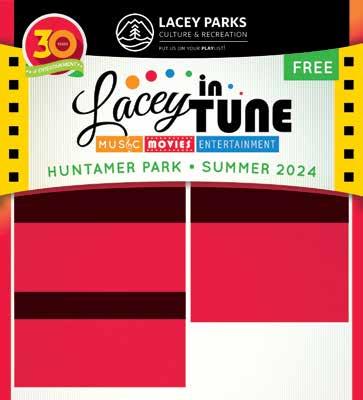





Bloedel Reserve on Bainbridge Island is a place where kids of all ages can explore the wonders of Nature.













30 / PARENTMAP.COM
CREATE YOUR OWN ADVENTURE
Island | Timed tickets are required for admission Open Tuesday–Sunday, rain or shine | bloedelreserve.org Fun
Family
Waterfront
Cap
TUESDAYS
Entertainment Series 6:30 pm July 9–Aug 13 6:30 pm 18ft x 18ft Screen • Concessions Available • Bring Your Own Seating 7:00 pm FRIDAYS For more info more l aceyparks org/ events laceyparks.org/events 360 491 0857 360.491.0857 WEDNESDAYS Concert Series Noon – 1:00 pm July 10–Aug 14 12:00 noon Music AND Movies Concerts at 7:00 pm Movies at Dusk Food Trucks 6:00 pm July 19 – Aug 9 Food Trucks Guaranteed Friday Only () The Lodges on Vashon www.lodgesonvashon.com Vashon Island, WA It’s where you want to be.
Bainbridge
Friendly!
Festival June 1-2, 2024
Sante Marina
Children’s



OLYMPIC, YOSEMITE & JOSHUA TREE NATIONAL PARKS
The Ultimate Adventure Camp for Youths & Teens!

“The Best Backpacking Summer Camp for Teens Out West!” – OUTSIDE MAGAZINE
#1 outdoor activity in Yosemite on TripAdvisor, now in Olympic National Park!
Use the Code “OLYNP15” for 15% off your first adventure! lastingadventures.com



FAMILY ADVENTURE / 31
SUMMER CAMPS & GUIDED FAMILY TRIPS
FAS24_lasting_adventures_1-4.indd 1 4/1/24 12:46 PM























































































 Photo courtesy of Magnuson Cafe & Brewery
Photo courtesy of Magnuson Cafe & Brewery



































































































































































































































